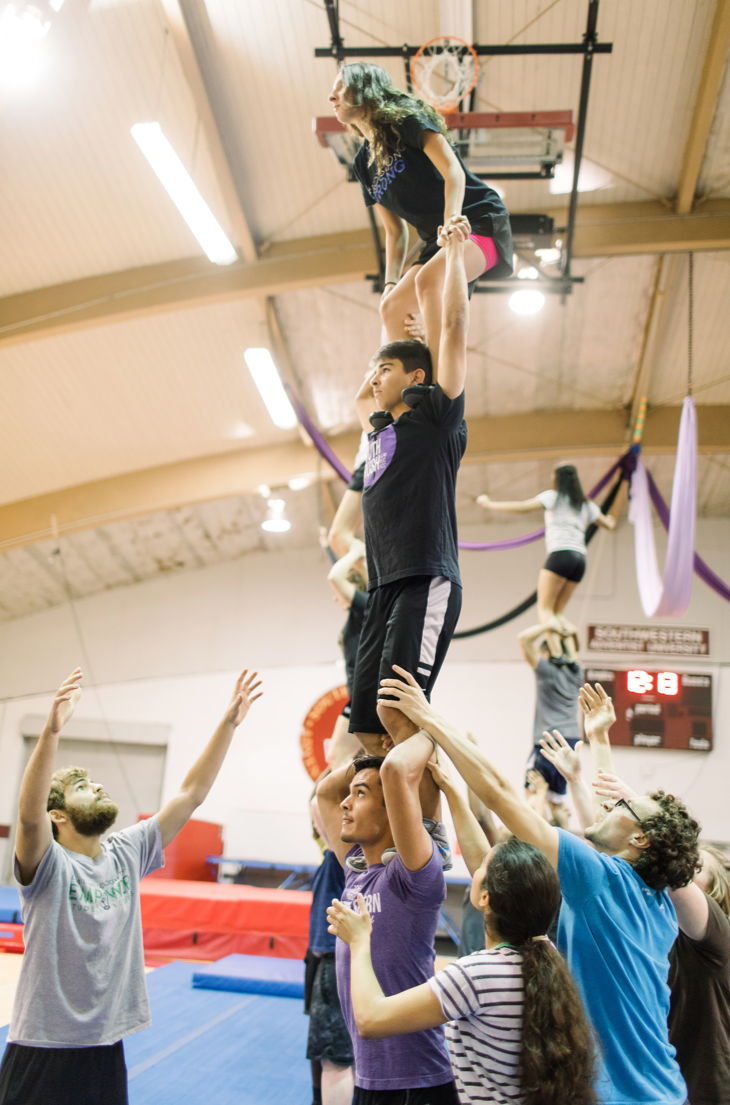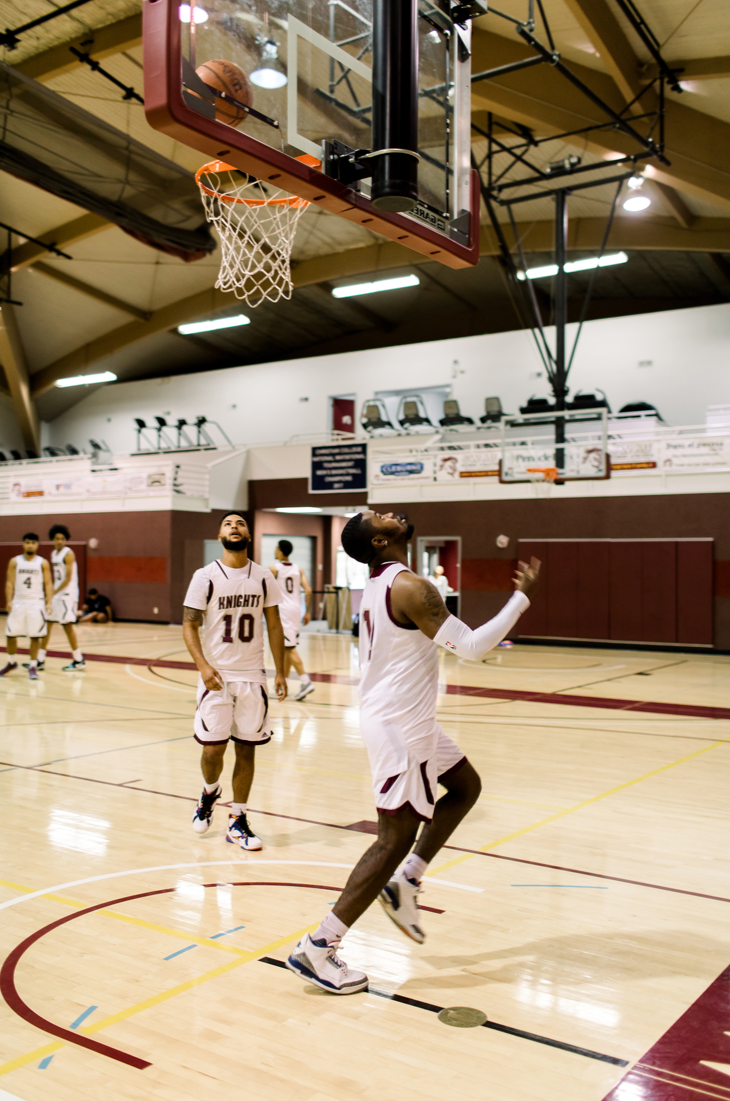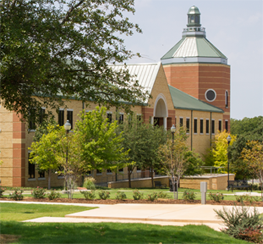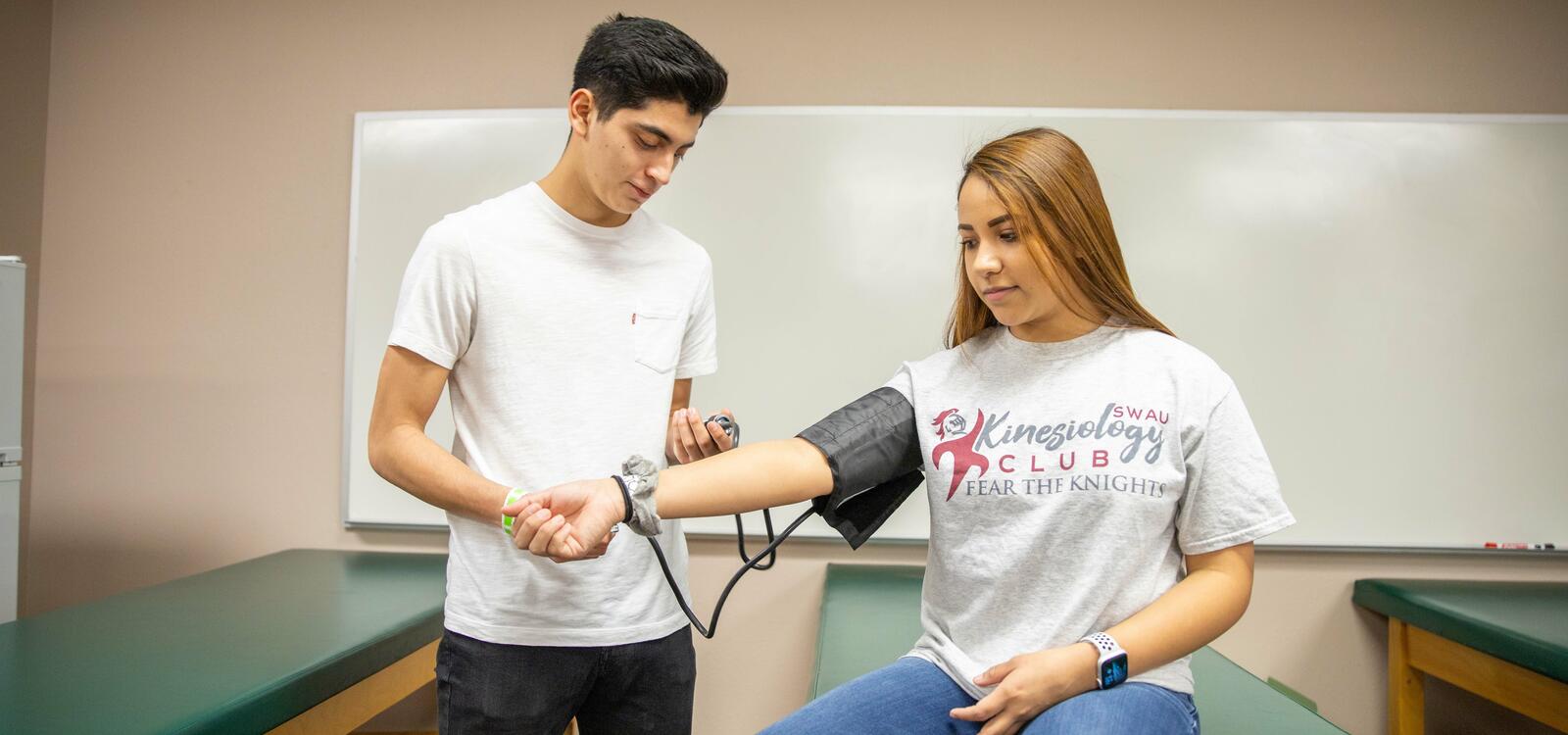B.S. Exercise Science
Have you always been fascinated with how the body works and how it can improve a person’s quality of life? Then why not promote public wellness and physical activity by earning a B.S. in Exercise Science. Small class sizes mean lots of hands-on, active learning with professors who take a personal interest in your well-being and success.
Career Field
Exercise Science is an excellent pre-professional course of study for:
- Exercise Physiology
- Cardiac Rehabilitation
- Physical Therapy
- Occupational Therapy
- Other areas of Sports Medicine
Job Outlook
- Employment of physical therapists is expected to increase 22% from 2018 to 2028. (www.bls.gov)
- According to the American Heart Association, cardiac patients who attend cardiac rehabilitation programs have a better survival rate than those who do not. Given this, and an aging population, physical and occupational therapists, which perform similar duties to cardiac rehabilitation therapists, are in demand, says the U.S. Bureau of Labor Statistics. (www.bls.gov)
- According to the Bureau of Labor Statistic Occupational Handbook, employment for an exercise physiologist is projected to grow 10 percent from 2018 to 2028, faster than the average for all occupations. Demand may rise as hospitals emphasize exercise and preventive care to help patients recover from cardiovascular and pulmonary diseases and improve their overall health. (www.bls.gov)
Careers
Improving quality of life is what Exercise Science is all about! With a B.S. in this degree, you’ll be prepared to work with others on improving their health and active lifestyle.
Professions
- Physical Therapist
- Teacher
- Coach
- Trainer
- Exercise Physiologist
- Recreational Director
- Athletic Administrator
- Fitness Specialist
10%
Expected employment growth of exercise physiologists between 2018-2028



| Kinesiology Core Curriculum | ||
| Item # | Title | Credits |
| KINT 110 | Fundamentals of Kinesiology | 3 |
| KINT 201 | Introduction to Kinesiology Research | 1 |
| KINT 241 | Care and Prevention of Athletic Injuries | 3 |
| KINT 310 | Motor Learning | 3 |
| KINT 321 | Exercise Physiology | 3 |
| KINT 331 | Biomechanics | 3 |
| KINT 490 | Senior Seminar (capstone/Portfolio) | 1 |
| Sub-Total Credits | 17 | |
| Required Cognates | ||
| Item # | Title | Credits |
| BIOL 101 | Anatomy & Physiology I | 4 |
| BIOL 102 | Anatomy & Physiology II | 4 |
| CHEM 111 | General Chemistry I | 4 |
| CHEM 112 | General Chemistry II | 4 |
| MATH 180 | Precalculus | 4 |
| MATH 141 | Introduction to Probability and Statistics | 3 |
| PHYS 121 | General Physics I | 4 |
| PSYC 212 | General Psychology | 3 |
| PSYC 220 | Human Growth and Development | 3 |
| Sub-Total Credits | 33 | |
| Total Credits: | 92 | |
Educational Qualifications
- Physical therapists entering the occupation need a Doctor of Physical Therapy (DPT) degree. All states require physical therapists to be licensed.
- Doctoral programs typically last three years.
- Most programs require a bachelor’s degree for admission, and many require specific prerequisites, such as anatomy, physiology, biology, and chemistry.
Exercise Science programs often include courses in:
- Biomechanics
- Anatomy
- Physiology
- Neuroscience
- And pharmacology
Students must also complete clinical rotations, enabling them to gain supervised work experience in areas such as acute care and orthopedic care.
For those with an emphasis in physical therapy, you may apply to and complete residency programs after graduation. Residencies last nine months to three years and provide additional training and experience in advanced or specialty areas of care.




